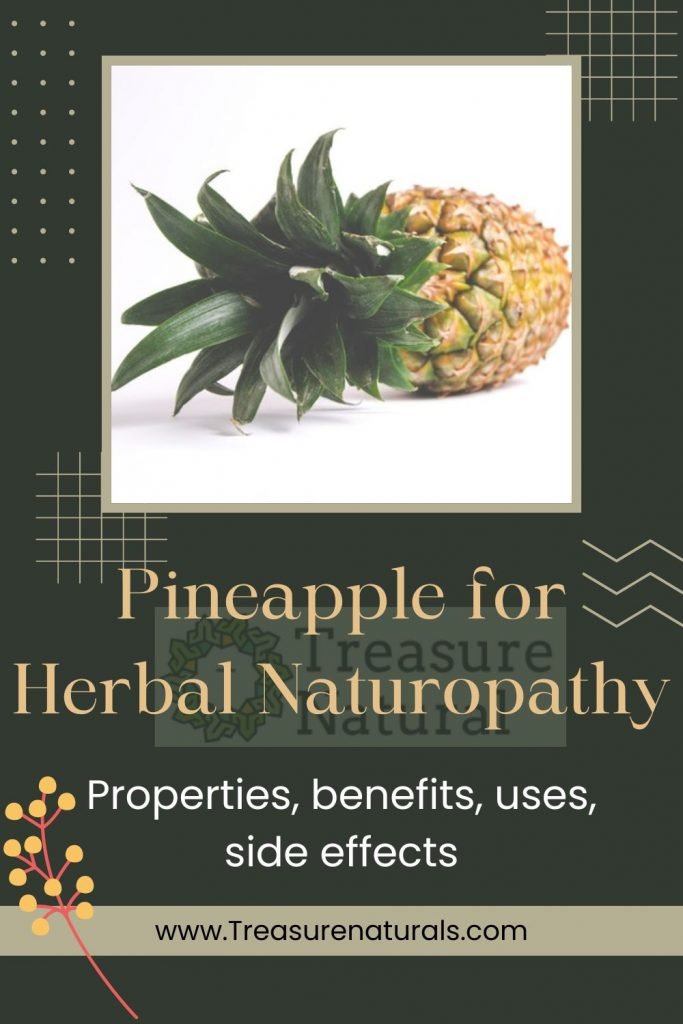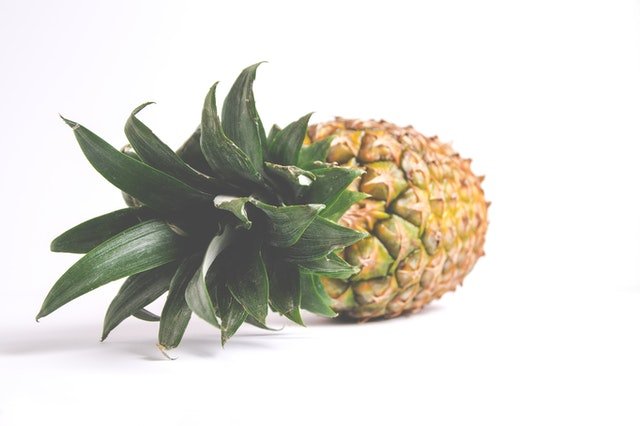
We all know pineapple well as the perfect tasty fruit in summer, but in reality it is also an effective anti-inflammatory and draining remedy, useful in case of water retention, cellulite and more.
Pineapple (Ananas comosus, Ananas sativus) is a herbaceous plant belonging to the Bromeliad family.
Properties of pineapple
Pineapple is a fruit rich in highly digestible proteins, vitamins and mineral salts including potassium and manganese. As for the pineapple vitamins, very interesting is the content in vitamin C that remains stable even after harvesting, thanks to the thick rind able to protect this molecule from oxidation.
Tasty, nutritious and low in calories, it is particularly suitable during the summer months to hydrate the body and replenish vitamins and minerals, as well as in low-calorie diets by virtue of its satiating power and sweet taste. Pineapple has also been attributed sexual properties, because it seems that its consumption has an aphrodisiac effect.
In phytotherapy, the stem of infructescence is used, whose most important component is bromelain or bromelain, consisting of a set of proteolytic enzymes present precisely in the stem, but also in the fruit and juice of pineapple. Precisely the presence of bromelain is the basis of the benefits of pineapple, giving it anti-inflammatory, antiplatelet, fibrinolytic and healing properties.
Benefits of pineapple
Taking pineapple in the form of a supplement has beneficial effects especially for the digestive system and for the microcirculation.
Preparations based on pineapple stalk are particularly useful to facilitate the digestion of protein foods, combat inflammatory states and improve blood circulation and drainage, counteracting venous stasis and fluid stagnation.
Internally it is used in case of reduced skin trophism, hematomas, acute post-operative and post-traumatic swellings, muscle and joint trauma, venous insufficiency, heavy legs, edema and cellulite.
In fact, cellulite manifests itself as a consequence of a slowdown in lymphatic circulation and microcirculatory, which leads to water retention, edema, inflammation. Water retention and cellulite can be counteracted by improving your lifestyle, as well as with natural supplements against cellulite.
Finally, bromelain gives pineapple healing activity and is used to treat musculoskeletal injuries, sunburn and skin inflammation.
How to use
Internal use: 80-320 mg of dry extract in the form of tablets or capsules in 2 administrations per day, between meals, for about ten days.
Cotrodiandications
Pineapple is considered a safe remedy, with mild side effects. It should not be used in case of allergies, pregnancy and lactation, before surgery. In addition, its use is not recommended if anticoagulants or inhibitors of platelet aggregation, tetracyclines, chemotherapeutic agents are taken.
Description of the plant
The pineapple plant is a herbaceousnative to Central America, now cultivated in several tropical areas for the marketing of the fruit. It has leathery, long, toothed and thorny leaves, gathered in large rosettes. From the middle of the rosette rises an inflorescence axis carrying blue-purple flowers.
The fruit comes from the fusion of several berries. Each flower has its own sepal; the sepals become fleshy and juicy and develop in the fruit, crowned with a rosette of leaves. What we mistakenly call fruit is an infructescence, which has a yellow and fleshy pulp formed by the meeting of the bracts and the axis and covered with a brown rind, formed by plates fused together.
The actual fruits are therefore small berries of which you can see the outer wall in the shape of a polygonal shield.
The habitat of pineapple
Native to Central America, it includes eight species and several ornamental varieties. Today it is cultivated in Europe, Hawaii, the Philippines, Southeast Asia, Latin America, Florida and Cuba. It prefers soils with good internal drainage, and medium acidic and a tropical or sub-tropical climate.
Background

Pineapple was brought to the Caribbean islands by the Caribi Indians, who called it anana. In Guadalupe, in 1493, Christopher Columbus was able to see it for the first time.
It was then brought to Europe and from there distributed to the Pacific islands by Spanish explorers who named it “pine cone of the indies” and “royal pine cone“. The Spanish later exported it to the Philippines and in the sixteenth century it reached Hawaii and Guam. It landed in England in 1660 and began to be cultivated in greenhouses around 1720.
Today pineapple is one of the most well-known tropical fruits in the world. The juice of the pineapple stem, due to its enzymatic activity, was used as early as the eighteenth century to facilitate digestion.






